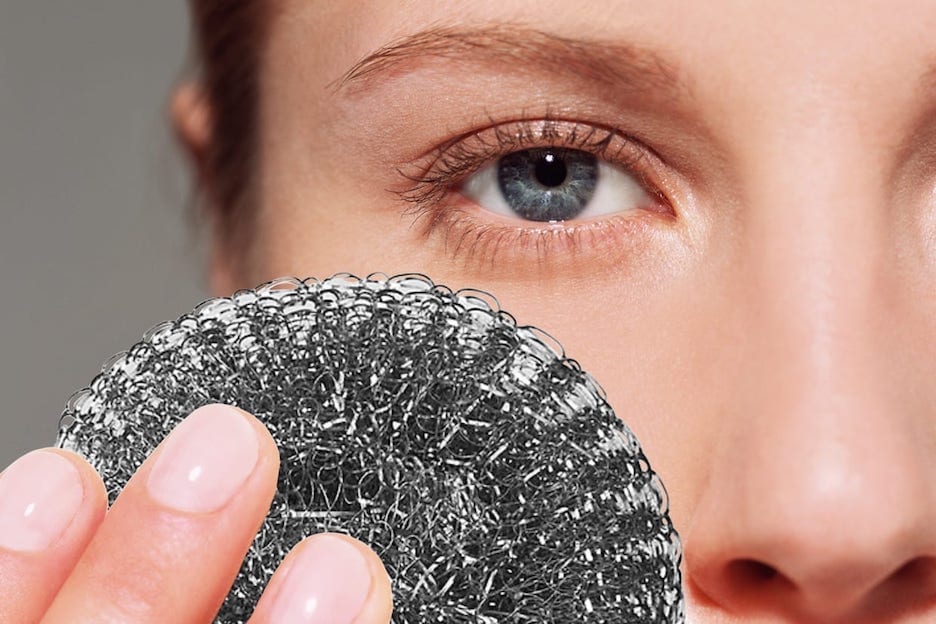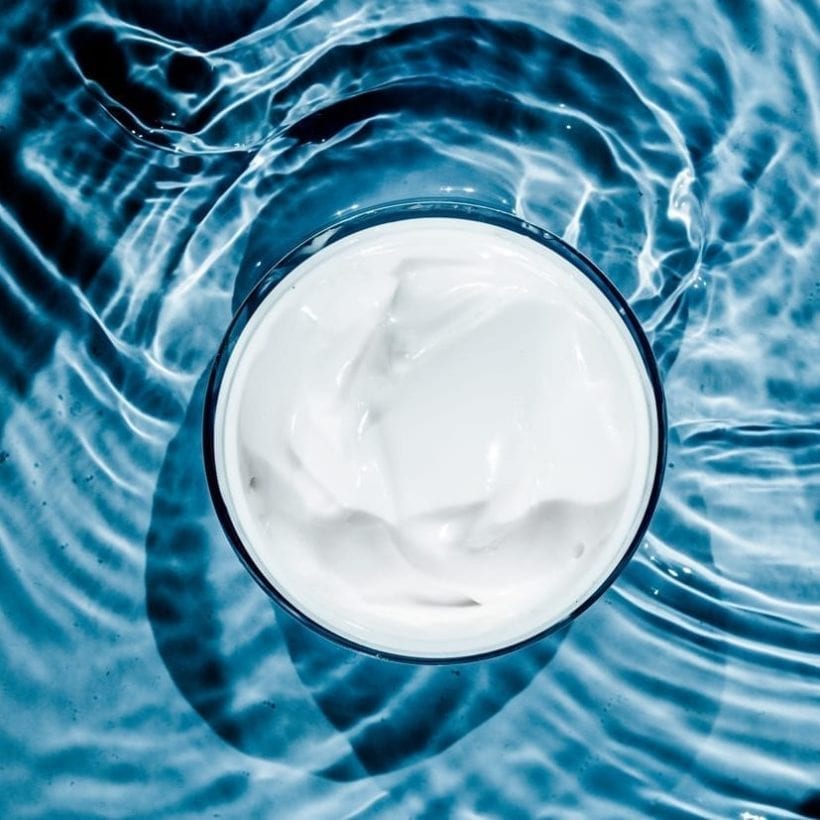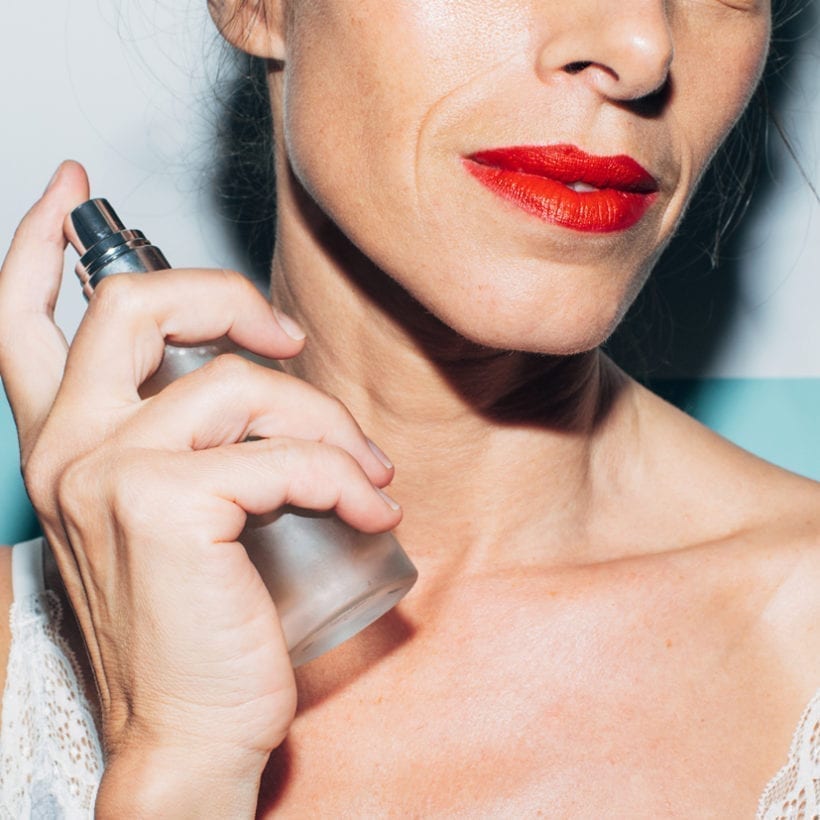As the saying goes, you can have too much of a good thing — even in skincare. And especially when it comes to exfoliation.
When used correctly, exfoliators effectively remove dead skin cells to reveal bright and healthy skin, but taking it too far can lead to skin issues such as redness, sensitivity and even spots. Experts break down the ins and outs of the popular skincare step.
Why should you exfoliate your skin?
While your skin sheds dead skin cells every 28 days as part of the natural skin cycle, exfoliation speeds up the process. “Exfoliation will break down the cells in the outermost layer of the skin called the stratum corneum,” says Vicki McNulty, a senior aesthetician at Skin & Sanctuary. Removing dead skin cells in this way has multiple benefits for the skin: “It unclogs pores, prevents breakouts, buffs away dead skin and stimulates cellular turnover,” she adds.
Exfoliation unclogs pores, prevents breakouts, buffs away dead skin and stimulates cellular turnover.
Exfoliation is sandwiched between cleansing and serums in your skincare routine to enhance any products you apply after. “The removal of dead skin cells via exfoliating will allow for deeper product penetration of skin care products such as vitamin C, vitamin A (Retinoids) or any hydrating serums, oils or moisturizers,” says McNulty.
Physical versus chemical exfoliation
Exfoliating products can be broken down into two categories that serve the same function but operate in different ways. “A physical exfoliant gently abrades the skin and rubs away dead cells with grains or microspheres (for example, crushed sugar or jojoba beads) while a chemical exfoliant is a mild acid or enzyme that penetrates the top few layers of skin to soften and dissolve dead cells,” says Dr Rekha Tailor, a UK-based cosmetic doctor.
Chemical exfoliants come in two sub-categories: alpha-hydroxy acids (AHAs) and beta hydroxy acids (BHAs). Both have their own benefits so it is best to choose on your own skin type. “AHAs are water-soluble and mainly assist with skin resurfacing while BHAs are oil-soluble and work well at getting into the pores to break down oil that leads to breakouts,” says McNulty. In general, AHAs suit dry or combination skin while BHAs work better on oilier or spot-prone complexions. Those prone to sensitivity can use either but will benefit best from gentler formulations.
How often should you exfoliate your skin?
The jury’s out on this one as tolerance to exfoliators varies hugely from person to person. “How often you exfoliate depends on your skin type and exfoliation method. Generally, the more aggressive the exfoliation, the less often it needs to be done,” says Tailor. Aggressive is defined by particle size for physical exfoliants (bigger being more) and the percentage of active ingredient for chemical ones (higher being more).
For the majority of skin types, a gentle chemical exfoliant can be used daily (below 10 percent for an AHAs or below 2 percent for BHAs). Higher-strength chemical exfoliants and physical exfoliants are best reserved for a once or twice a week treatment — think of them as masks.
If you suffer from skin sensitivity or conditions like eczema or rosacea, be wary of exfoliation. “While you still want to remove dead skin cells, you also need to strengthen the skin. This is normally done using super gentle chemical exfoliants and avoiding all physical ones,” explains McNulty.
What happens when you over-exfoliate?
Harsh scrubs, highly concentrated chemical exfoliants, or a combination of the two can cause damage to the skin’s barrier function. Too much physical exfoliation can cause micro tears in the skin while too much chemical exfoliation can remove too many layers of skin cells, which leads to irritation.

How do you know if you’re over-exfoliating?
“Signs of over-exfoliation can be irritation, burning or peeling, redness and inflammation, breakouts and increased sensitivity to other products in your routine,” says Tailor.
And although that satisfying squeaky clean feeling may lead you to believe you’re helping your oily skin, it could be infuriating the skin further. “Over-exfoliation can strip the skin of natural oils which in turn can lead to further breakouts,” McNulty adds.
Healing over-exfoliated skin
If you overdo it, it is important to strip back your skincare routine for a period of skin healing, which lasts around one week, according to experts (although it can vary by individual needs). McNulty suggests removing all active ingredients from your regimen to allow for effective repair: “Skip foaming cleansers, physical and chemical exfoliators and retinol products and instead use gentle cleansers and fragrance-free hydrating products.” Over-exfoliation can also cause increased skin sensitivity, so during this time, you may be more prone to damage from environmental aggressors like UV rays. Including an SPF 30+ in your daytime routine is essential.
Over time, you will be able to introduce exfoliation back into your skincare regime. Consider visiting a dermatologist for an expert-approved plan, or, if not, try adding an exfoliating step to your routine a few times a week before upping it to once a day again.
“When the skin has strengthened and healed, you’ll be able to incorporate forms of exfoliation again,” says McNulty. “However, it’s important to remember that everyone’s skin is different and listening to your own skin during this process is vital.”
We only recommend products we have independently researched, tested, and loved. If you purchase a product found through our links, Sunday Edit may earn an affiliate commission.








